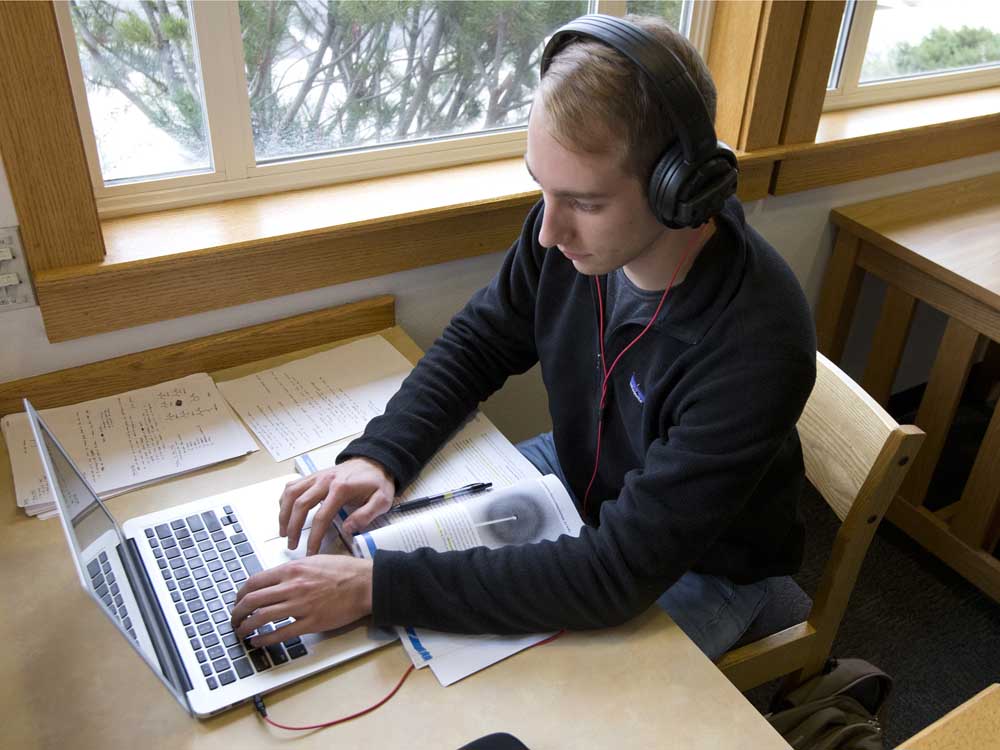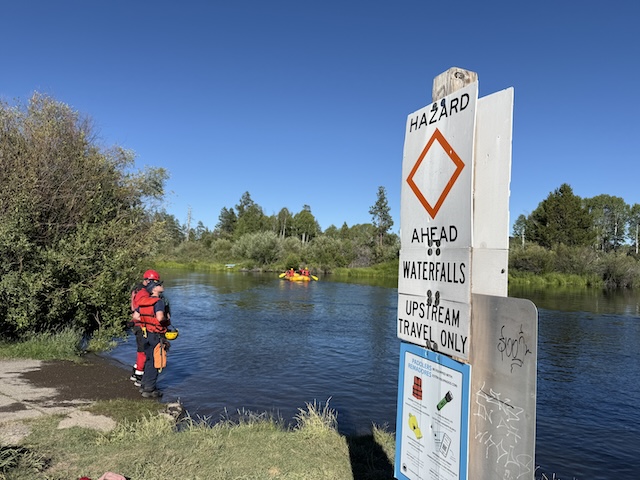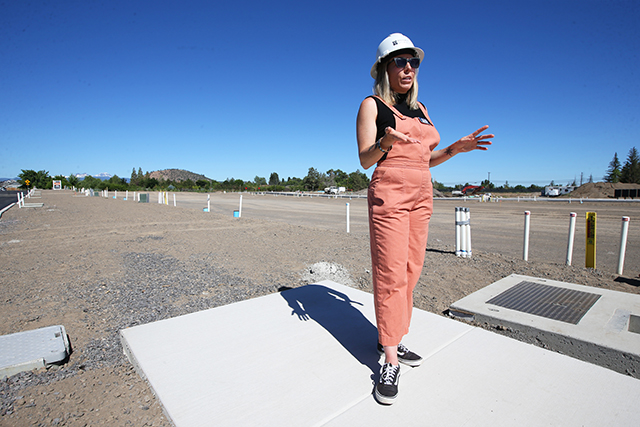Crook County is data center central, but there’s a broadband gap
Published 12:00 am Sunday, October 30, 2016

- Andy Tullis / The BulletinDavid Jeffries, of Powell Butte, takes advantage of the free wifi at the Crook County Library in Prineville on Wednesday. "I use the free wi-fi at the library to study for my medical college admissions test," he said.
David Jeffries tried to get broadband internet service at his home in Powell Butte, but running the line was such an expensive proposition, he set up a mobile hotspot with his cell phone.
He also leans on the Crook County Library in Prineville. “I use the free Wi-Fi at the library to study for my Medical College Admissions Test,” he said.
Trending
The broadband gap is a common feature of rural life, even around Prineville, where fiber-optic networks are strong enough to have attracted Facebook and Apple data centers. The fact that Prineville has plenty of fiber for big business doesn’t necessarily mean the service extends to the average consumer, said Jason Carr, a Prineville City Council member who formerly worked for Economic Development of Central Oregon.
“There’s a little bit of a blurring of reality,” he said.
More than 1,000 households in Crook County lack access to wired broadband at download speeds of at least 10 megabits per second, according to the Federal Communications Commission. That’s fast enough to check email, surf the web and, according to Netflix, stream high-definition video.
Crestview Cable Communications serves the city of Prineville, but rural areas rely on less-speedy technologies like digital subscriber lines, also called DSL, and satellite. Swaths of unincorporated areas, such as Powell Butte and Juniper Canyon Road, which leads to Prineville Reservoir, are eligible for federally subsidized service upgrades, which might not come until the end of 2020.
“I talk to people who would like to live in Crook County, but they telecommute,” said Seth Crawford, a Crook County commissioner and real estate agent. “They can’t get the connectivity in the places they want to live.”
Telecommunications companies started more than a decade ago building the fiber-optic rings that now keep Bend, Madras, Prineville and La Pine connected to the internet, even if one line is disrupted. Facebook, which arrived in Prineville in 2011, built its own loop, and there’s enough broadband capacity in Crook County to support a third data center, or some other large business.
Trending
“We’re the internet capital,” said Mike O’Herron, general manager of Crestview Cable based in Prineville. “We’re fiber-rich.”
It’s too expensive, however, to extend fiber branches to sparsely populated areas from the trunks that run along U.S. Highway 97 and state Highway 126. Even when several homes are clustered in one area, extending the service won’t be worthwhile if it means running cable across several miles of open land, O’Herron said.
“There’s some really nice homes a ways out of town, and they’re setting on multiple acres. You might be running up a quarter-mile driveway,” he said. “You have to have so many homes per mile to justify it.”
The federal government plans to spend about $9 billion through 2020 supporting internet service in rural areas. In Oregon, the Connect America Fund II will provide $21.7 million a year to support service to 50,327 homes and businesses.
Most of the money spent in Oregon will go to CenturyLink, which provides DSL technology over copper phone lines and also builds fiber-optic lines. The company has not said in what order it will deploy the federal funds across Oregon.
“CenturyLink is finalizing its 2017 (Connect America Fund) enablement plan and will share more details with local communities as soon as they are available,” spokeswoman Rachel Montemayor said.
The FCC requires that companies using the Connect America money reach 40 percent of the locations they agreed to serve by the end of 2017, FCC spokesman Mark Wigfield said. All agreed-upon locations must be reached by the end of 2020.
The companies have some wiggle room in meeting the FCC’s requirements. If a location that already receives 10 Mbps downloads is in a designated area, the money can be used to maintain the service at that level, Wigfield said. Companies can also skip upgrading service at any location within a designated census block, as long as they don’t count it toward the agreed-upon total.
Crook County isn’t the only underserved part of Central Oregon, according to the FCC’s Connect America Fund service map. CenturyLink has agreed to provide service in Deschutes County near Alfalfa and Tumalo and in Jefferson County outside of Culver, Madras and around Metolius.
Shawna Gerdes, manager of the Alfalfa Store near the Deschutes-Crook county line, often sees people drive up and park so their kids can use the store’s Wi-Fi to finish their homework. One boy who catches the bus to Redmond High School from the store’s parking lot does his homework there every day before his parents pick him up, Gerdes said.
Most people in the area have access to DSL, Gerdes said, but it’s unreliable, especially in windy or rainy weather. Montemayor stated, “CenturyLink DSL is a reliable service. The actual speed customers experience will vary depending on not only the bandwidth provided to the customer by CenturyLink, but also other factors outside of CenturyLink’s control such as customer location, the quality of the customer’s equipment and wiring within the home, and the websites accessed by the customer.”
DSL speed depends on the distance from data hub. For fiber-optic lines, it’s the size of the pipeline, which O’Herron said is being upgraded every nine months. Nevertheless, he said, if everyone in town wants to stream Netflix at the same time of day, video is going to buffer. “People will say it’s not performing well,” he said, “and it’s not.”
“As an industry, we’re struggling to keep up with the number of devices and technology people are putting in their homes,” said O’Herron, a veteran of the cable industry who helped BendBroadband launch internet service.
Crestview now offers 100 Mbps downloads across its service area, which is largely in Prineville, O’Herron said. The exact boundaries, however, are proprietary information, he said.
Even people who live in Prineville complain that internet service isn’t fast enough to support a home-based business.
Crestview’s speeds are impressive at times, but they’re inconsistent, said Bend real estate agent Kerry O’Neal, who lives near the center of Prineville. On a recent weekday, he said he clocked download speeds at both 60 Mbps and 6 Mbps. “I’m grateful I have the option for something that mostly works, but it still means I come to the office to get real work done.”
Now that he works from home, Carr, the City Council member, said he understands the complaints he’s heard from constituents. He’d like to see the city and county commission a study of what’s available and where, and then try to close the gaps.
“For Prineville’s ability to create jobs and grow the economy,” Carr said, “having adequate access is important.”
— Reporter: 541-617-7860, kmclaughlin@bendbulletin.com








